

Devon, a county in southwest England, is distinguished by its scenic landscapes, rugged coastline, and rich historical tapestry. Among its most captivating historical features are its castles, which dot the landscape, offering a glimpse into the past where battles for power and control shaped the region. These castles, ranging from majestic fortresses to romantic ruins, tell the story of Devon’s strategic importance through the ages. They served not only as military strongholds but also as seats of governance and symbols of wealth and power.
The castles of Devon are as diverse as the county’s landscapes, each with its unique history and character. From the Norman conquests to the civil wars, these castles have been silent witnesses to the unfolding of Devon’s history. Today, they stand as monuments to the past, attracting scholars, tourists, and locals alike, eager to explore their ancient halls and learn the stories etched into their stones.
As we embark on this journey through Devon’s castellated heritage, we will uncover the tales of intrigue, ambition, and resilience that these fortifications embody. The following sections will delve into the history of these architectural marvels, highlight some of the most famous castles in Devon, explore the ongoing efforts to preserve them, and examine their role in the county’s tourism and cultural identity.
Let’s step into the past and explore the enduring legacy of Devon’s castles, where history meets the horizon.
History of Castles in Devon
The story of castles in Devon begins in the aftermath of the Norman Conquest of England in 1066. These formidable structures were initially erected as wooden motte-and-bailey castles, a design that allowed the Normans to establish control over the newly conquered lands rapidly. The mottes were artificial mounds with a wooden keep on top, surrounded by a bailey, or enclosed courtyard, which served as a space for living quarters, workshops, and livestock. Over time, many of these were replaced or reinforced with stone to better withstand sieges and the ravages of time.
Early Construction and Strategic Importance
The strategic importance of Devon, with its access to the sea and proximity to Cornwall, made it a significant focus for the Normans. Castles such as Totnes and Exeter were among the first to be established, serving not only as military fortifications but also as administrative centers from which the Normans could exert their control over the surrounding lands. These early castles were crucial in consolidating Norman power and played a pivotal role in the social and political restructuring of medieval England.
Medieval Expansion and Fortification
As the Middle Ages progressed, Devon’s castles evolved from simple wooden structures to complex stone fortresses. This transformation was driven by advances in military architecture and the need for stronger defenses against both external invaders and internal rebellions. The introduction of concentric designs, with multiple lines of fortification, and improvements in living conditions within the castles reflected the changing role of these structures from purely military bastions to symbols of wealth, power, and architectural sophistication.
The Castles and the Community
Beyond their military and administrative functions, castles in Devon played a central role in the local economy and society. They were hubs of activity, attracting merchants, craftsmen, and farmers who provided goods and services to the castle’s inhabitants and visitors. Markets and fairs often sprang up in the shadow of the castle walls, fostering economic development and social interaction among the wider community.
Key Historical Events
Devon’s castles have been the backdrop to numerous historical events that have shaped the region’s history. During the English Civil War (1642–1651), many castles in Devon were fortified by Royalists or Parliamentarians, depending on their strategic importance and the allegiance of their lords. The sieges and battles that ensued left an indelible mark on the landscape, with some castles being slighted or demolished to prevent their further use as military strongholds.
The aftermath of the civil war and the subsequent periods of peace led to a decline in the military significance of castles. Many were abandoned or converted into stately homes and country estates, reflecting the changing needs and tastes of their owners. This transition from fortresses to residences marked a new chapter in the life of Devon’s castles, with gardens, parks, and lavish interiors becoming as much a part of their identity as their ancient battlements.
Legacy and Lore
The castles of Devon are steeped in legend and lore, with tales of ghosts, hidden treasures, and historic sieges passed down through generations. These stories, whether rooted in fact or folklore, add a layer of mystique to the castles, captivating the imagination of visitors and locals alike. From the romantic ruins of Berry Pomeroy, shrouded in tales of love and betrayal, to the imposing walls of Dartmouth, echoing with the echoes of maritime defense, each castle has its own story to tell.
Famous Castles in Devon
Devon’s landscape is dotted with castles, each bearing its unique stamp of history, architecture, and legend. From the grandeur of stately homes to the romantic allure of ruins, these castles offer a glimpse into the county’s past. This section highlights some of the most famous castles in Devon, exploring their origins, architectural features, historical significance, and what they offer to visitors today.
Powderham Castle
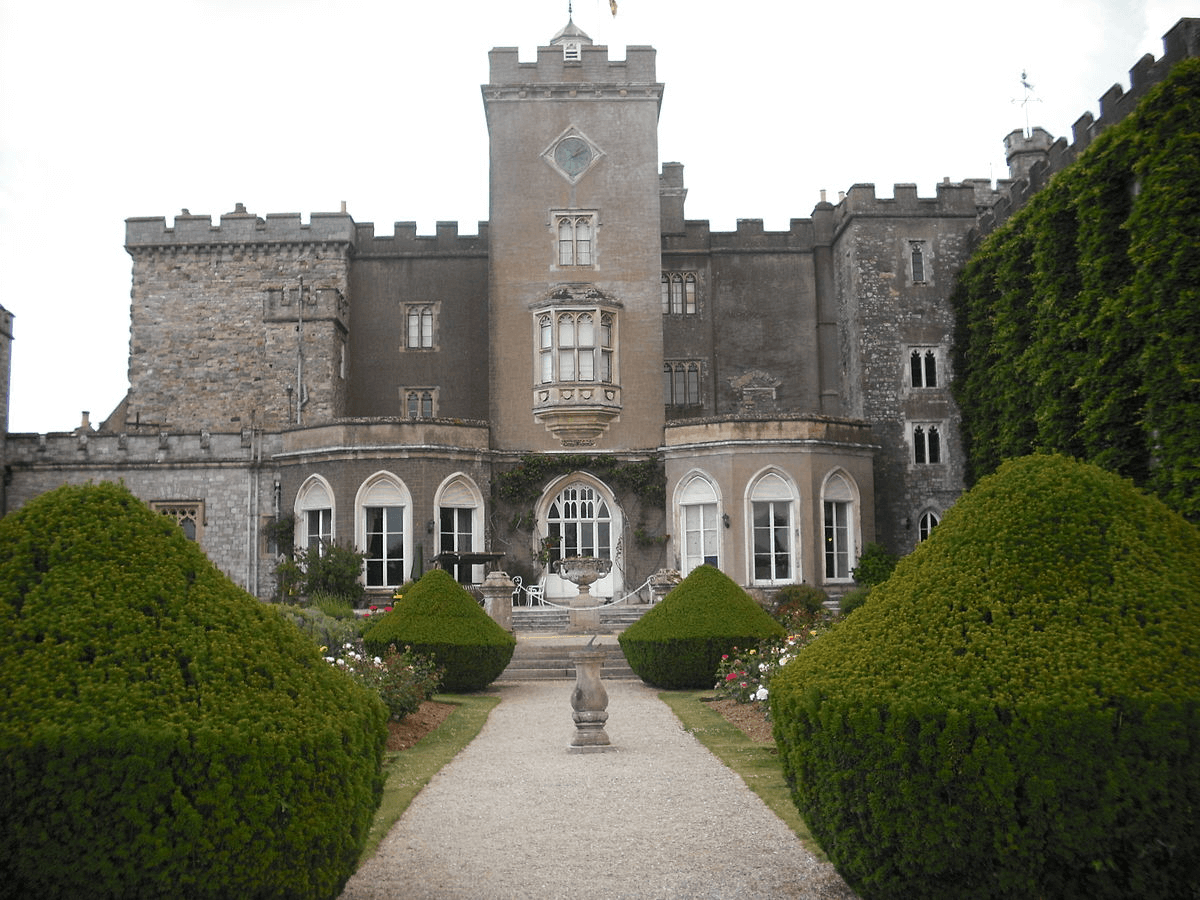
Powderham Castle, nestled on the banks of the River Exe, is a testament to centuries of history. Built by Sir Philip Courtenay in 1391, it has remained in the Courtenay family for over 600 years, making it one of England’s oldest family homes still in residence. Unlike many castles designed for defense, Powderham was built as a fortified manor house, reflecting its purpose as a symbol of status and power rather than a military stronghold.
The castle’s architecture is a blend of medieval, Gothic, and Victorian styles, reflecting the various additions and renovations it has undergone. Visitors are treated to the grandeur of the Music Room, the intricate Gothic Revival staircase, and the vast collection of art and antiques that adorn its halls and chambers.
Powderham Castle is not just a relic of the past but a vibrant part of the community, hosting concerts, educational programs, and events like the famous Powderham Food Festival. Its beautiful grounds, including a deer park and formal gardens, offer a peaceful retreat and a chance to explore the natural beauty of the Devonshire landscape.
Castle Drogo
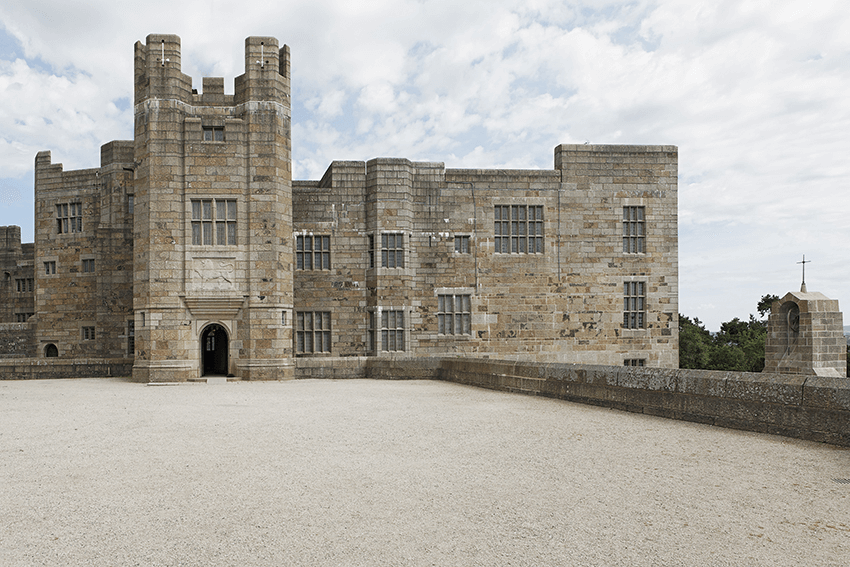
Castle Drogo, nestled in the rugged landscape of Dartmoor in Devon, stands as a testament to the last great castle built in England. Conceived in the early 20th century by Julius Drewe, a wealthy businessman who dreamt of creating a family dynasty, Castle Drogo was designed by the renowned architect Sir Edwin Lutyens. Construction began in 1911 and, despite numerous interruptions, including the outbreak of World War I, it was completed in 1930. The result is a remarkable blend of medieval and modern architectural styles, making Castle Drogo a unique monument in the annals of British architecture.
Unlike traditional medieval castles built for defense, Castle Drogo was designed with the comfort and aesthetics of the modern era in mind, while still echoing the grandeur and solidity of its ancient predecessors. It features a striking granite facade, battlements, and a dramatic setting atop the Teign Gorge, offering breathtaking views of the Dartmoor landscape. Inside, the castle boasts a wealth of early 20th-century craftsmanship, with intricately designed interiors that combine the historical with the contemporary.
However, Castle Drogo is not just an architectural marvel; it’s a symbol of one man’s ambition to create a lasting legacy. Despite its historical stylings, the castle was equipped with innovative technologies for its time, including electricity, central heating, and an internal telephone system.
Today, managed by the National Trust, Castle Drogo undergoes constant conservation efforts to preserve its structure and beauty, particularly against water ingress which has been a challenge since its construction. Visitors to Castle Drogo can explore its lush gardens, designed by George Dillistone, a friend of Lutyens, which are as much a part of the estate’s charm as the castle itself. The gardens feature formal terraces, a rose garden, and winding paths that lead through the surrounding woodlands.
Castle Drogo stands as a fascinating bridge between the past and the present, embodying the romantic spirit of medieval architecture while embracing the comforts and innovations of the modern age. It offers a captivating glimpse into the dreams and aspirations of its founder, Julius Drewe, and remains a must-visit landmark for anyone interested in England’s architectural or social history.
Photo Author Antony McCallum
Dartmouth Castle
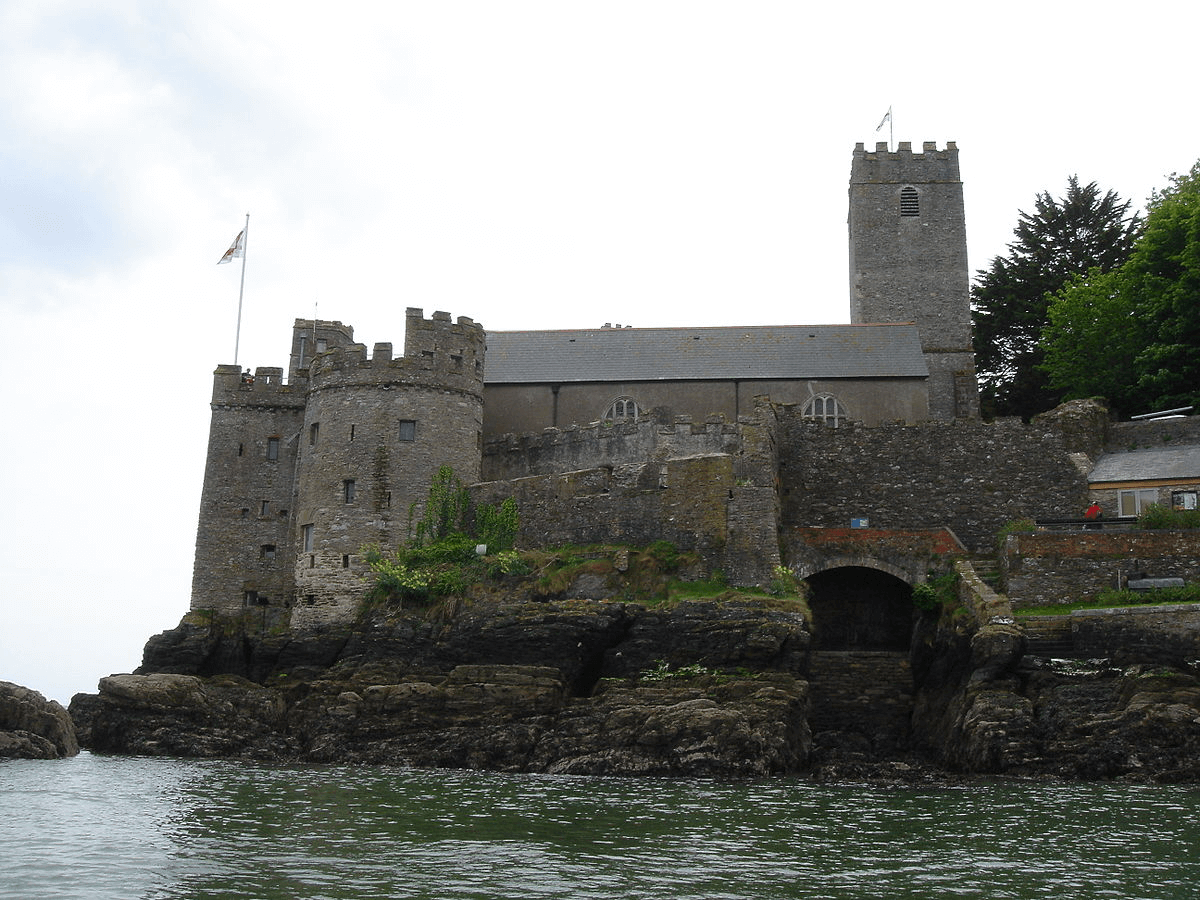
Dartmouth Castle has guarded the narrow entrance to the Dart Estuary for over 600 years, serving as a key defense against invaders from the sea. Constructed in the 14th century, it was one of the first castles in England designed to use artillery, marking a significant evolution in military architecture.
The castle complex includes the main fortification, a gun tower built in the 15th century, and St. Petrox Church, which shares the site. Dartmouth Castle’s strategic position and innovative design made it an essential component of England’s coastal defenses, playing roles in various conflicts, including the English Civil War and World War II.
Visitors to Dartmouth Castle can explore the gun tower, the battlements, and the Victorian-era additions. A highlight is the opportunity to take a ferry ride from the town of Dartmouth to the castle, offering beautiful views of the estuary and the surrounding area. The castle also features interactive exhibits and displays, making it an educational and enjoyable experience for history enthusiasts and families alike.
Berry Pomeroy Castle

Berry Pomeroy Castle, located in a secluded woodland valley, is famed for its beauty and the legends of ghosts that haunt its ruins. Built in the late 15th century by the Pomeroy family, it was later sold to the Seymour family, who planned to turn it into a lavish mansion. Despite their grand plans, the castle was never completed and was abandoned by the end of the 17th century, leaving behind the stunning ruins that exist today.
The castle’s blend of medieval defensive structures and Elizabethan architecture makes it unique among Devon’s castles. Its dramatic location and the stories of the White Lady and the Blue Lady, two of its most famous ghostly inhabitants, add to its allure as one of the most haunted castles in Britain.
Visitors to Berry Pomeroy Castle can explore the ruins, which include the shell of the great hall, towers, and defensive walls, all of which give a sense of the castle’s intended grandeur. English Heritage manages the site, providing interpretive signs that recount the history of the castle and its ghost stories, making for an intriguing visit that combines architectural beauty with a touch of the supernatural.
Photo Author J Morley (Smalljim)
Okehampton Castle
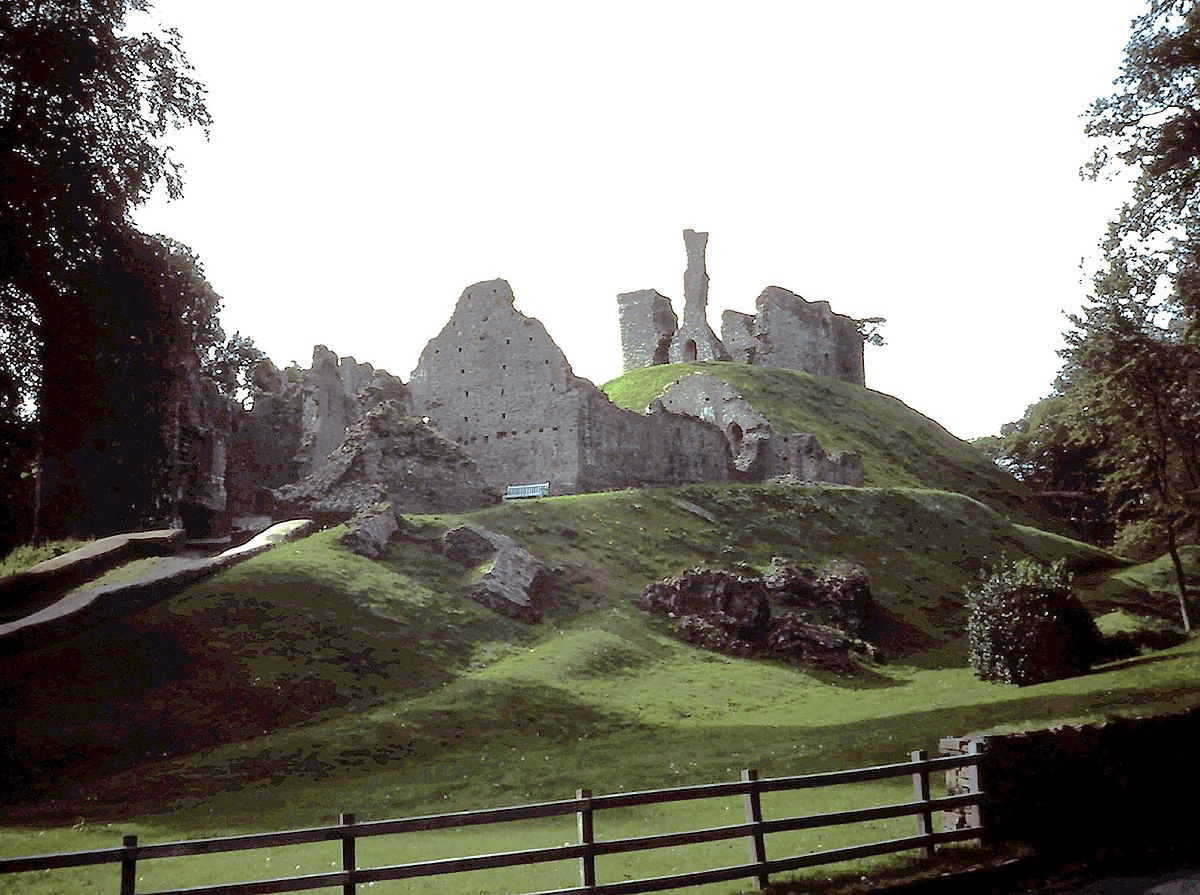
Okehampton Castle, standing on a wooded hill overlooking the West Okement River, is the remains of the largest castle in Devon. Founded soon after the Norman Conquest, it was originally a motte and bailey castle with a stone keep added in the 14th century by the Courtenay family, who were Earls of Devon. Its purpose was as much about asserting dominance over the surrounding lands as it was about defense.
By the 16th century, Okehampton Castle had transformed into a luxurious residence, boasting a large hall, chambers, and guest apartments, surrounded by lush gardens and hunting grounds. However, the castle fell into disrepair and abandonment after the Courtenay family fell out of favor with Henry VIII.
Today, Okehampton Castle is a romantic ruin, with its ghost stories and picturesque setting drawing visitors from far and wide. Managed by English Heritage, it offers a glimpse into medieval and Tudor life, with detailed interpretation panels guiding visitors through the extensive ruins. The castle’s tranquil surroundings and the nearby walks through the woodland and along the river make it a perfect spot for a day out in nature, steeped in history.
Photo Author Roger Cornfoot
Totnes Castle
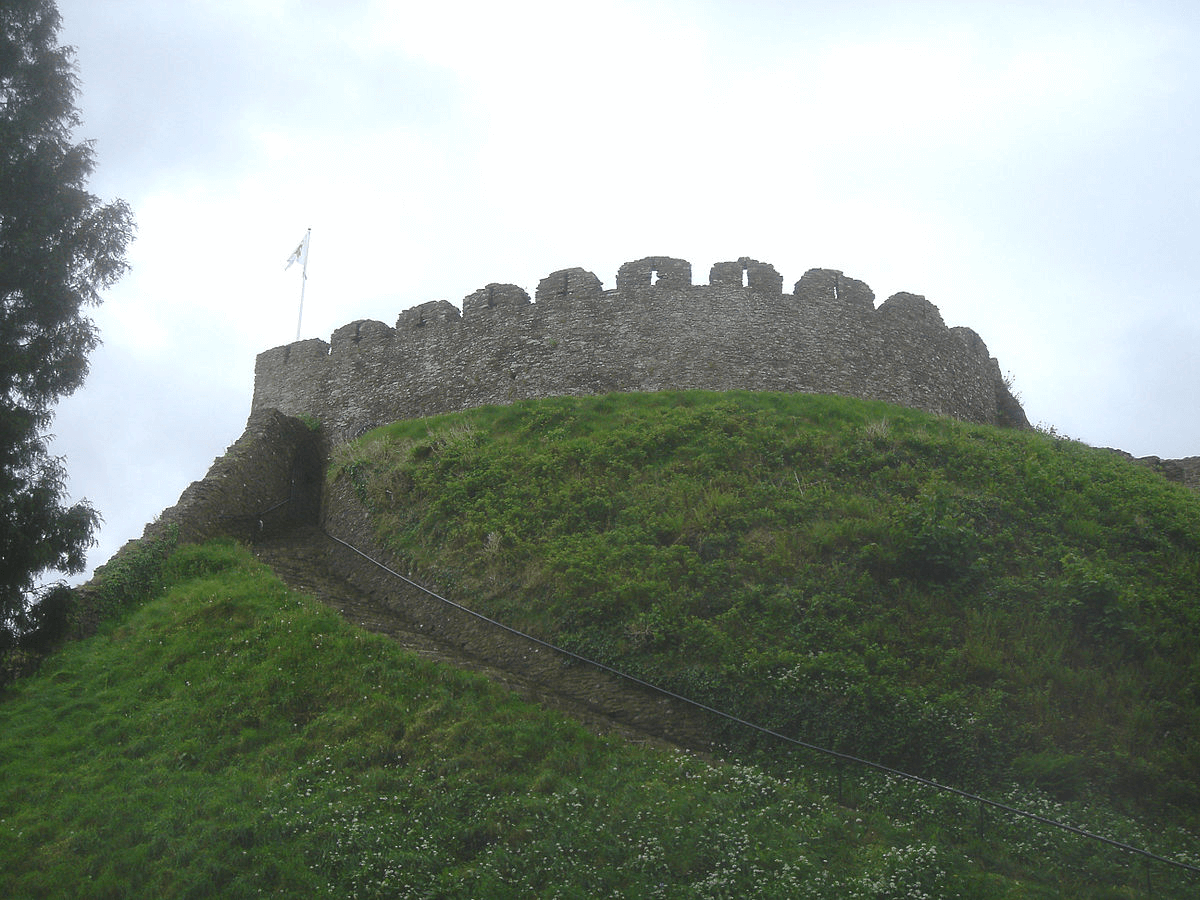
Perched atop a high hill overlooking the town of Totnes, Totnes Castle is a classic example of a Norman motte and bailey castle. It was likely built shortly after the Norman Conquest to assert control over this strategic part of Devon. The surviving stone keep, dating from the 12th century, offers panoramic views of the surrounding countryside and the River Dart below.
Though much of the original structure has been lost to time, the castle’s shell keep stands as a well-preserved monument to medieval fortification techniques. The site also includes remnants of the curtain wall that once encircled the bailey, providing a glimpse into the castle’s defensive capabilities.
Today, Totnes Castle is managed by English Heritage and is accessible to the public. It serves as a popular attraction for those interested in medieval history and architecture, offering educational displays and events that bring its storied past to life. The castle’s hilltop position makes it a perfect spot for picnics and enjoying the views of Totnes and beyond.
Exeter Castle/Rougemont Castle
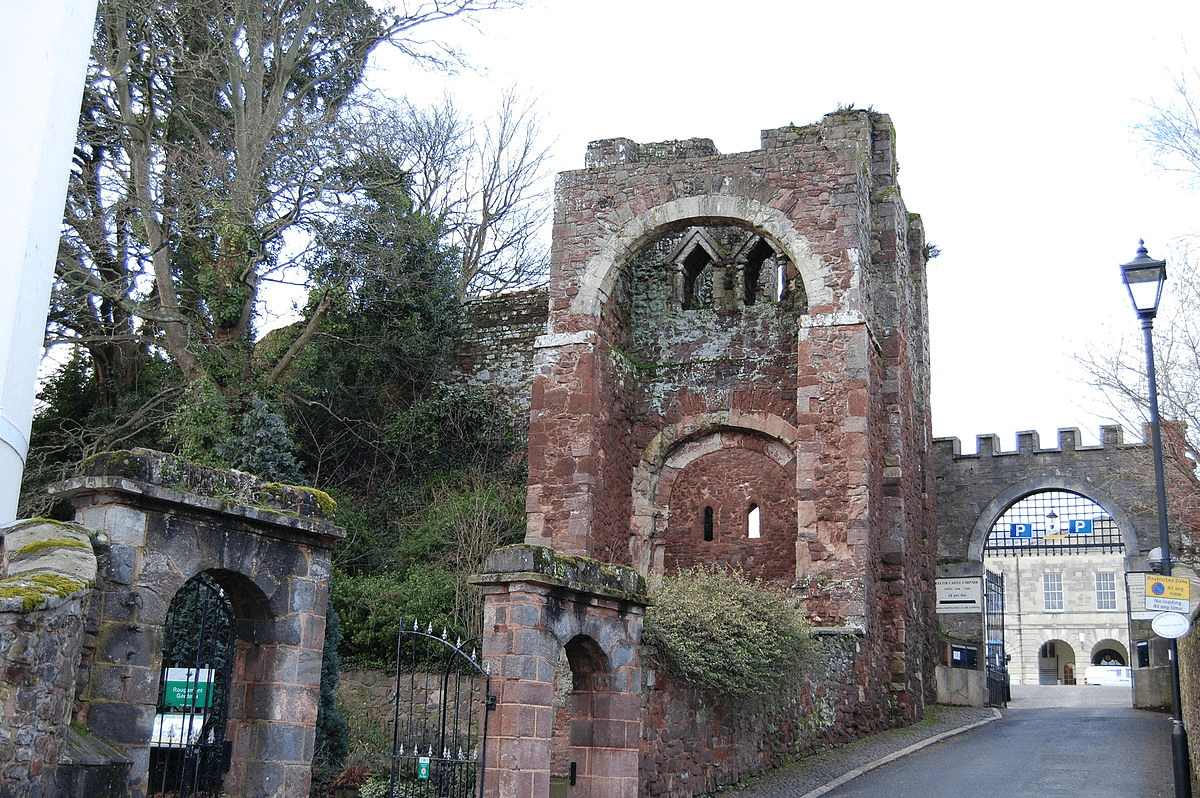
Exeter Castle, also known as Rougemont Castle, is a historic fortress situated in the heart of Exeter, Devon. Its origins date back to the immediate aftermath of the Norman Conquest of England. Commissioned by William the Conqueror in 1068, the castle was designed to assert Norman dominance over the town and the surrounding countryside. Named after the red sandstone found in the area, which was used in its construction, Rougemont Castle offers a vivid glimpse into England’s medieval past.
Over the centuries, Exeter Castle has played a significant role in England’s history. It withstood a siege by King Stephen in 1136 during the Anarchy, a civil war of succession between Stephen and Empress Matilda. Despite its military origins, much of the castle’s original defensive structures have been lost to time. What remains today is primarily the Norman gatehouse, regarded as one of the best-preserved examples of its kind in the country, and parts of the original walls that once encircled the castle complex.
The castle’s significance extends beyond its military use; it has been a center of administration and justice for Devon. The Assize Courts were held here until the 18th century, underscoring its central role in the legal and civic life of the region. In the 19th century, much of the site was redeveloped to accommodate the expanding city, and the castle gradually lost its judicial functions.
Today, Exeter Castle is a vibrant part of the city’s cultural and social scene. The castle and its grounds have been transformed into a public space that hosts a variety of events, including concerts, festivals, and weddings. The ancient walls and gatehouse provide a picturesque backdrop, blending the historical and the contemporary in the heart of Exeter.
Visitors to Exeter Castle can explore the historic gatehouse, walk along the ancient walls, and enjoy the beautifully maintained gardens. The castle’s transformation from a medieval fortress to a modern venue for social and cultural events exemplifies how historical sites can be adapted to serve contemporary needs while preserving their rich heritage. Exeter Castle remains a symbol of the city’s resilience and adaptability, offering insights into England’s Norman past and its journey through the centuries.
Photo Author Juan J. Martínez from Exeter, UK
Tiverton Castle
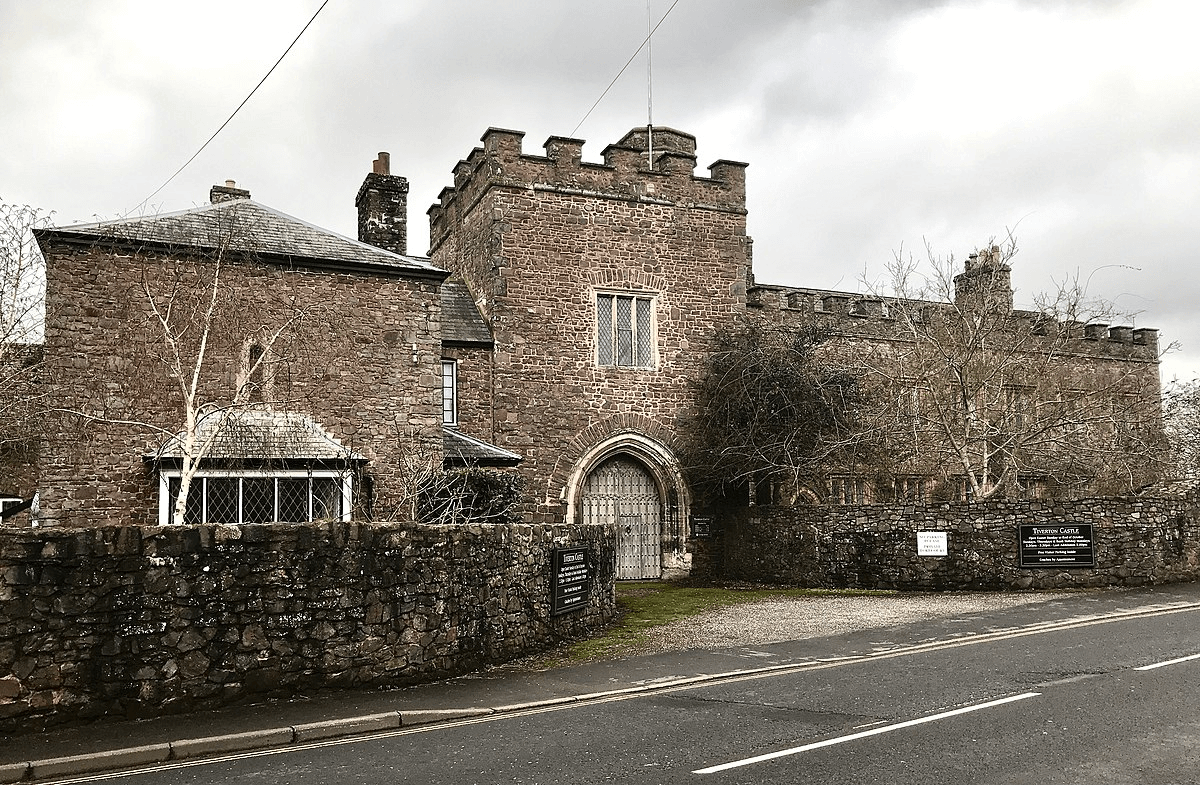
Tiverton Castle in Devon, England, embodies a rich tapestry of history that stretches back to the twelfth century. Originally established as a motte and bailey castle shortly after the Norman Conquest, it was constructed to assert Norman control over the region. Over the centuries, Tiverton Castle evolved from a wooden fortress to a formidable stone castle, reflecting the changing needs and architectural styles of the times. Its strategic importance was underscored during the medieval period when it served as a military stronghold and a residence for the powerful Earls of Devon.
Significant remodeling in the early 14th century transformed Tiverton Castle into a luxurious residence without compromising its defensive capabilities. However, the castle’s military significance was highlighted once again during the English Civil War when it endured a three-day siege by Parliamentary forces in 1645. Although the castle was partially demolished on Cromwell’s orders after the siege to prevent its further use as a military stronghold, substantial portions survived and have been lovingly restored.
Today, Tiverton Castle stands as a fascinating blend of ruin and restoration. Visitors are invited to explore its historic grounds, which include the remains of the defensive walls, the gatehouse, and several original buildings that have been incorporated into a private residence. The castle also boasts an impressive collection of arms and armor, providing a tangible connection to its martial past.
The beautifully maintained gardens are another highlight, offering a peaceful retreat with stunning views of the surrounding Devonshire countryside. These gardens, coupled with the castle’s architecture and historical exhibits, make Tiverton Castle a captivating destination for history enthusiasts, garden lovers, and those looking to immerse themselves in England’s rich heritage.
Tiverton Castle’s enduring appeal lies in its ability to tell the story of England’s medieval past, the tumult of the Civil War, and the transition into a peaceful private residence. It stands as a testament to the layers of history that have shaped Devon and continues to enchant visitors with its beauty and historical significance.
Photo Author Jack1956
Haldon Belvedere/Lawrence Castle
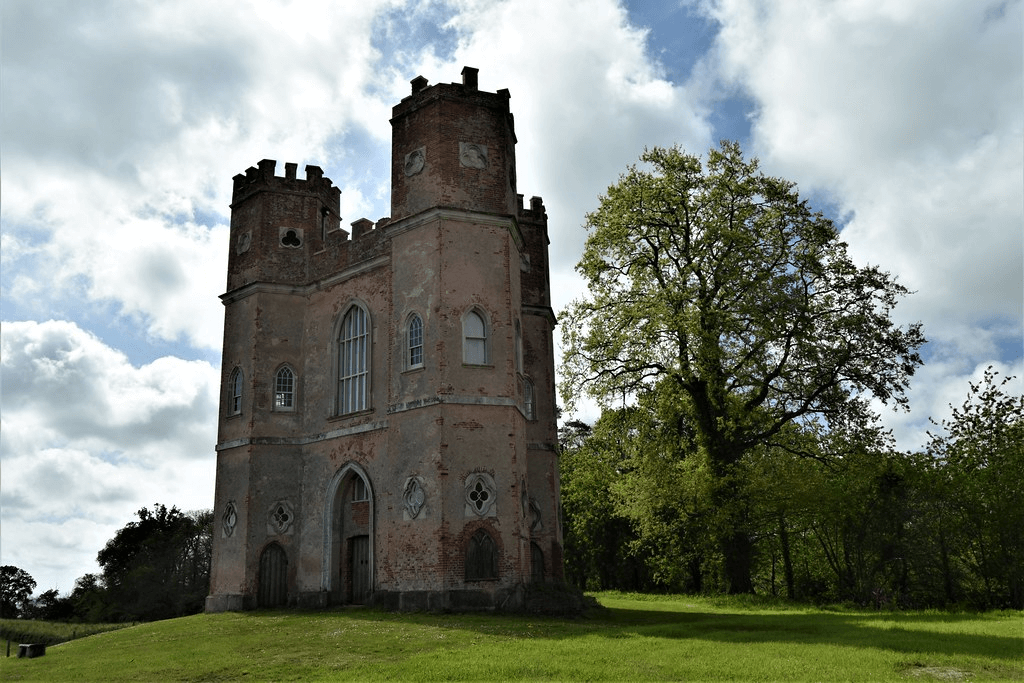
Lydford Castle

Lydford Castle, nestled on the edge of Dartmoor in Devon, England, is a monument steeped in history and lore. Its origins trace back to the early medieval period, serving initially as a fortification in the turbulent years following the Norman Conquest of England. Over the centuries, Lydford Castle evolved, reflecting the changing dynamics of power, law, and governance in medieval England.
Constructed in the 11th century, the castle began as a simple earthwork and timber structure, part of the Norman efforts to consolidate control over the newly conquered territory. Its strategic importance was due to Lydford’s position as a significant Saxon settlement, already known for its mint and as a center of administration and justice for Devon. By the 13th century, the castle was rebuilt in stone, marking its transition into a more formidable fortress and a symbol of royal authority.
However, Lydford Castle is perhaps most notorious for its role as a prison and court of law. In the medieval period, it housed a stannary prison, associated with the administration of Dartmoor’s tin mining industry. The stannary courts had jurisdiction over disputes involving tin miners, and the castle’s dungeon became the final abode for those who fell foul of the harsh laws governing mining rights and practices. It was during this time that Lydford Law became a byword for summary justice, famously encapsulated in the phrase, “First hang and draw, then hear the cause by Lydford Law.”
Despite its grim reputation, the structure of Lydford Castle is relatively modest. The surviving ruins consist primarily of a three-story tower, built in the 13th century, which served as the main keep. Its architecture is characteristic of Norman military construction, with thick stone walls and minimal adornment, designed for durability and defense rather than comfort or aesthetics.
Today, Lydford Castle stands as a testament to the complex tapestry of English history, from its role in the Norman conquest of Britain to its place in the administration of justice in medieval society. Managed by English Heritage, it is open to the public, offering visitors a glimpse into the past and the opportunity to explore the rich history of Dartmoor and its surrounding communities. The castle’s location near Lydford Gorge, with its spectacular natural beauty, makes it a compelling destination for those interested in both history and the great outdoors, inviting exploration and reflection on the layers of human and natural history that have shaped this unique part of Devon.
Photo Author roger geach
Preservation and Conservation of Castles in Devon
The preservation and conservation of Devon’s castles are vital in keeping the county’s history alive for future generations. These efforts are led by organizations such as English Heritage and the National Trust, alongside private owners, local authorities, and community groups. The challenges are significant, ranging from the natural decay of ancient structures to the impact of climate change and the need for sustainable tourism management.
Preservation work involves a delicate balance between maintaining the historical integrity of the castles and making them accessible and safe for visitors. This often includes structural stabilization, restoration of architectural features, and the installation of visitor facilities. Conservation efforts also focus on the surrounding landscapes, ensuring that the natural beauty and biodiversity that form the backdrop to these historic sites are preserved.
Funding for these efforts comes from a variety of sources, including government grants, private donations, and revenue from tourism. Educational programs and community involvement are also key components, raising awareness of the importance of heritage conservation and encouraging public support for ongoing efforts.
The work of preserving Devon’s castles is never-ending, but it ensures that these monuments to the past remain vibrant parts of the county’s cultural landscape. They stand as reminders of Devon’s rich history, architectural innovation, and the timeless stories that have unfolded within their walls.
The Role of Castles in Devon’s Tourism and Culture
Castles play a pivotal role in Devon’s tourism and cultural identity, drawing visitors from around the world with their historical significance, architectural beauty, and the stories they tell. They serve as venues for a wide range of cultural events, from open-air theatre performances and concerts to historical reenactments and educational programs, enriching the cultural fabric of Devon.
The economic impact of castle tourism is significant, contributing to the local economy through entrance fees, guided tours, and spending on accommodation, food, and souvenirs. Castles also provide a focal point for community activities, hosting local fairs, markets, and educational visits, fostering a sense of pride and connection to the region’s heritage.
Educationally, castles offer invaluable insights into England’s medieval past, architectural evolution, and social history. They are outdoor classrooms, providing hands-on learning experiences for students of all ages and inspiring interest in history, archaeology, and conservation.
As symbols of Devon’s rich history and cultural heritage, castles are integral to the county’s identity. They remind residents and visitors alike of the layers of history that have shaped the region, offering a tangible connection to the past. The preservation of these castles ensures that this heritage is not lost but celebrated and shared with future generations.
